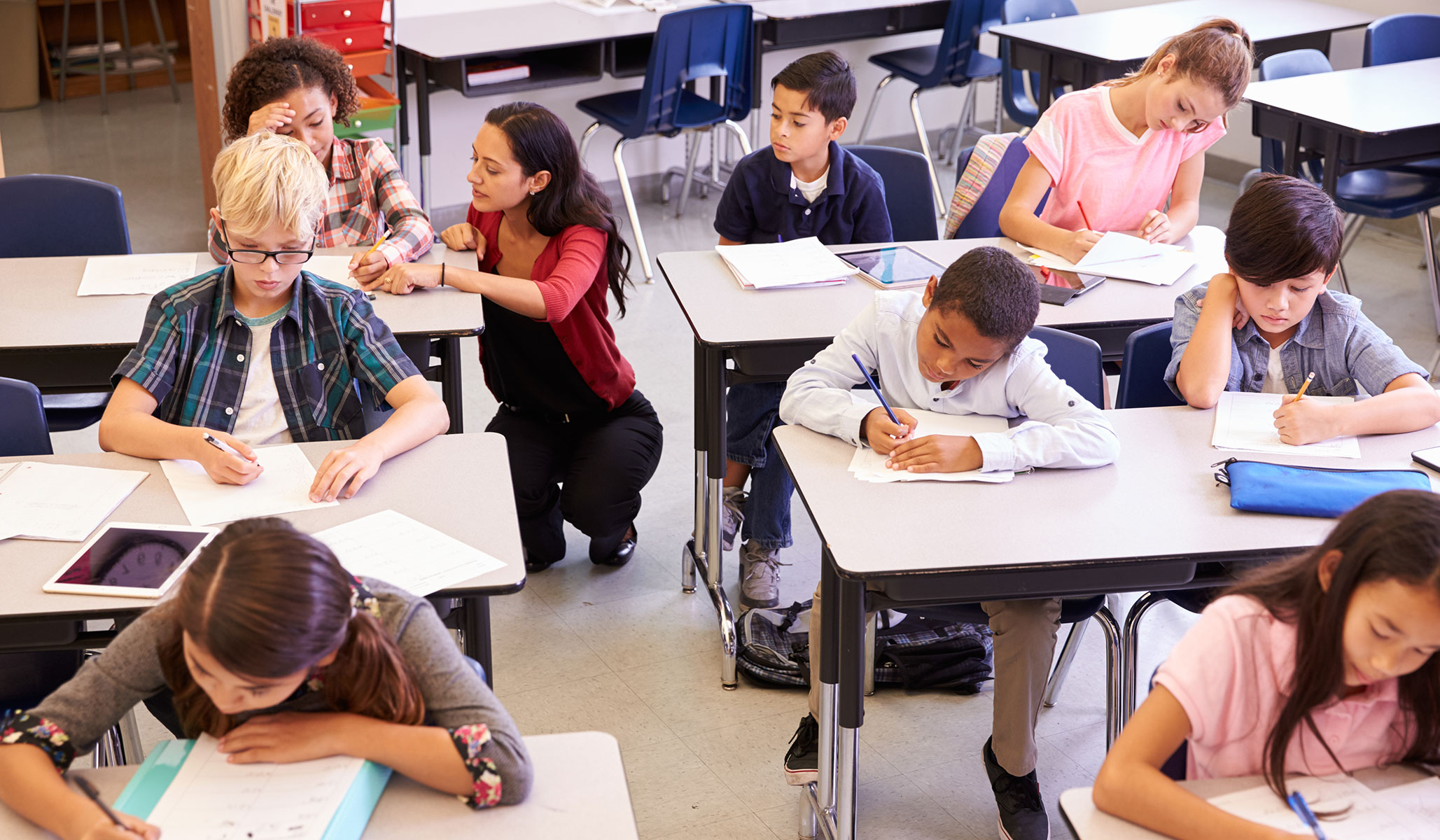


Conflating teachers with the government entities that oversee them or the predatory unions that ostensibly represent them is misguided.
NRPLUS MEMBER ARTICLE S hould a traveler spend any amount of time with the American Right, he would quickly surmise that public-school teachers land, in conservative approval rankings, somewhere between Ron Klain and Californian drag-queen activists.
There are certainly valid concerns regarding wayward educators, with frequent news articles exposing progressive bias, corrupting DEI initiatives, and union strong-arming. Randi Weingarten, the president of the American Federation of Teachers, has not ingratiated herself with parents of any political stripe with her defense of school lockdowns and masking protocols — policies we knew and know to be detrimental to children’s development.
But for all of that, there are many reasons to be grateful for the 3.2 million public-school teachers in these United States. School-choice activists would be wise to consider them if they wish to expand enrollment at charter and private schools. And we should tread carefully in any efforts to redesign the education system, not because reform is unwarranted but because hasty overhauls could simply exchange known problems for new ones.
Conflating teachers with the government entities that oversee them or the predatory unions that ostensibly represent them is misguided.
More in Public Schools
-
Maine Mom Demands Investigation after School Counselor Secretly Gives Daughter a ‘Chest Binder’
-
DeSantis Exposes College Board’s Apparent Deceptions on AP African-American Studies
-
Blue-State Wealth Taxes, Brought to You by Teachers’ Unions
Something often lost in the coverage on the right of public-school teachers is how a majority are generous and good-hearted. In 2018, the University of Utah’s Education Policy Center polled employed teachers, as well as those leaving the field, and found that “the desire to make a worthwhile difference in the lives of children” was “very” or “extremely influential” for 85 percent, while retirement benefits and insurance hovered around 20 percent. Skeptics might suggest that the teachers are prettifying their motives, but the chasm between the most selfless and selfish answers is so great as to suggest at least some authenticity in the responses.
A supermajority of teachers instruct because it’s a calling — they’re well-meaning social workers armed with Flair pens, lesson plans, and caffeine. A teacher may be the only responsible adult in students’ lives, especially for children of limited means or from broken homes. For now, many of these kids are the burden of the public-school system during the day. An expansion of school choice would require more schools — such as the private elementary that I attended — to take on those duties as well, whether they are prepared to or not.
As the husband of a middle-school teacher, the son of a technical-college educator, and the grandson of a science teacher at private and then public school, I’ve long observed that the taxpayer has given himself a great gift by compensating teachers on the assumption of a 40-hour work week. From my perch alongside the behemoth of public education, it seems most teachers are far too focused on getting students to understand grammar and fractions to do anything like the ideological indoctrination that the right-wing sphere would have one believe. A Merrimack College survey found that teachers work a median of 54 hours per week, 25 of which are explicitly classroom instruction. The other 29 hours are devoted to grading, professional development, meetings, and fielding constant parent and student concerns.
If compensation were the priority, college grads who become teachers could very likely have found alternative careers that offer higher lifetime earnings by choosing a different track. As it is, they pigeonhole themselves by pursuing education degrees that have only one practical application, so the comparison is difficult to make, as noted by Heritage and EPI researchers. Those who quit teaching, therefore, earn less on average than those who remain. But this just further demonstrates how compensation is low on the priority list for young adults pursuing this career path.
There is no equivalent to public-school teachers. They deal with every level of government, every kind of student, plus the PTA. Perhaps this is part of the reason private-school teachers make significantly less on average than their public-school counterparts ($15,000 less on average). But that gap is almost certainly set to narrow as the challenged students whom public schools currently support through additional staffing and resources enter the private system. Private educators — especially those at religious institutions — who view their jobs as akin to mission work and are accordingly willing to accept less compensation than they would receive elsewhere, may no longer enjoy the relative level of stability they’re used to.
Instead, private educators will likely experience a titanic shift in expectations, a dizzying expansion of enrollment, and wearying oversight that invariably accompanies the receipt of tax dollars — all of which will influence compensation expectations. That little Reformed school that’s had no more than 100 kids concurrently enrolled in K–8 for 50 years could become a 500-student behemoth in the span of a few years — no small thing.
This is not a knock on those schools, or the surely well-intentioned teachers who work there. My point is only that conservatives should remember to be delicate when disrupting established institutions. While the need for the American education model to change is evident, the value of public schools for successive generations in a community should not be overlooked. They continue to play a large part. Basketball games, theatrical productions, Christmas shows, and art fairs unite Americans, instilling civic pride and making friends of neighbors.
Our public schools have done what they could. Yes, imperfectly. Yes, sometimes politically. But when we look to the future and envision expanded choices for students and parents, we should seek to recreate everything that public schools did well, and preserve those schools where we can. Human imperfection will never disappear, and we must guard against needless overreach regarding a system that still enjoys support among Americans. School choice must be an improvement, not merely an alternative or substitute. Whatever that future may hold, there will be millions of our current public-school teachers doing their best to educate and meet the needs of students.
